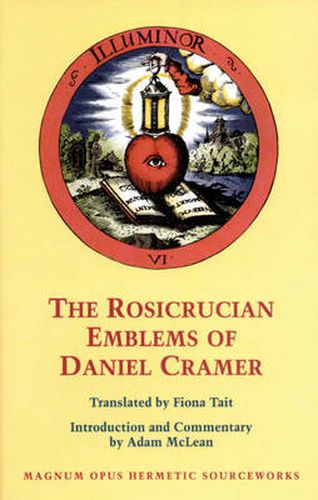Readings Newsletter
Become a Readings Member to make your shopping experience even easier.
Sign in or sign up for free!
You’re not far away from qualifying for FREE standard shipping within Australia
You’ve qualified for FREE standard shipping within Australia
The cart is loading…






The Rosicrucian Emblems is a significant yet little-known work of emblematic philosophy published in 1617, only one year after the appearance of The Chemical Wedding of Christian Rosenkreutz.
The work consists of 40 emblamatic plates, each bearing a title, together with a verse from the bible and two lines in Latin. The plates revolve around the symbolism of the heart, which undergoes a variety of processes and experiences through a cycle of 40 stages.
Adam McLean, in his introduction and commentary, elucidates the history of the text and the nature of the symbolism. He convincingly argues that Cramer, a Protestant theologian, was consciously trying to produce a series of spiritual exercises for a Protestant, esoteric Christianity. McLean outlines a way to work with the emblems and their symbolism and suggests that a work as profound and as simple as this can never die, but must always be a source of inspiration.
This book is a Rosicrucian item of great interest and will be greatly valued by all students of emblematic philosophy and the Hermetic tradition. Highly illustrated.
$9.00 standard shipping within Australia
FREE standard shipping within Australia for orders over $100.00
Express & International shipping calculated at checkout
The Rosicrucian Emblems is a significant yet little-known work of emblematic philosophy published in 1617, only one year after the appearance of The Chemical Wedding of Christian Rosenkreutz.
The work consists of 40 emblamatic plates, each bearing a title, together with a verse from the bible and two lines in Latin. The plates revolve around the symbolism of the heart, which undergoes a variety of processes and experiences through a cycle of 40 stages.
Adam McLean, in his introduction and commentary, elucidates the history of the text and the nature of the symbolism. He convincingly argues that Cramer, a Protestant theologian, was consciously trying to produce a series of spiritual exercises for a Protestant, esoteric Christianity. McLean outlines a way to work with the emblems and their symbolism and suggests that a work as profound and as simple as this can never die, but must always be a source of inspiration.
This book is a Rosicrucian item of great interest and will be greatly valued by all students of emblematic philosophy and the Hermetic tradition. Highly illustrated.